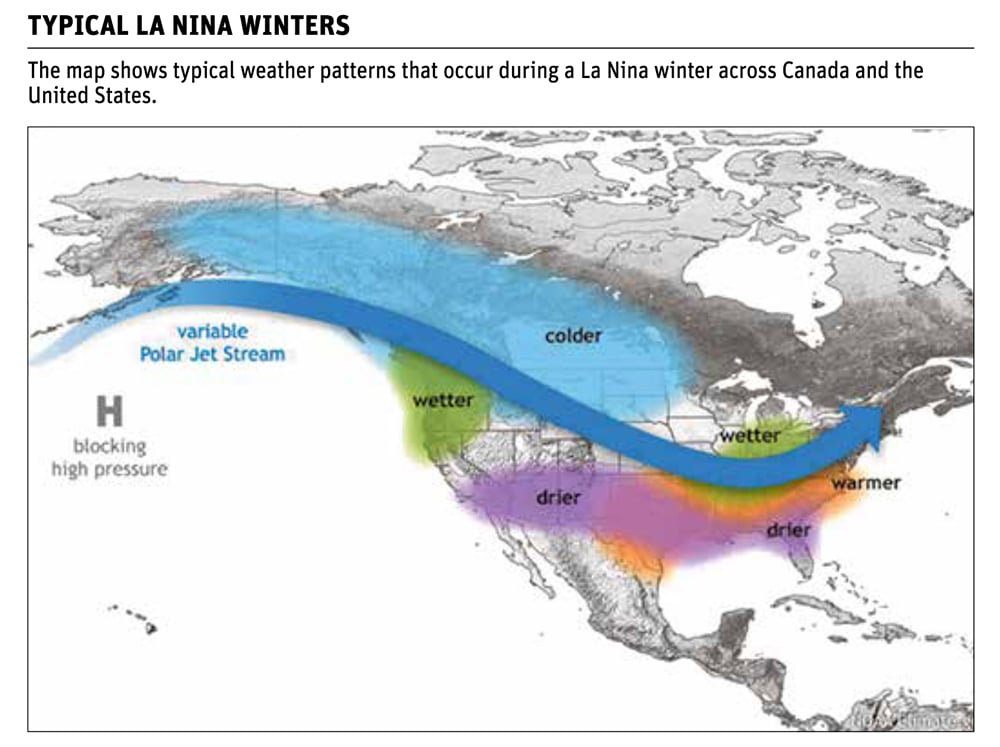
Introduction
The La Niña phenomenon, characterized by cooler ocean temperatures in the Pacific, significantly influences winter weather across North America. Understanding its effects is crucial for various sectors, including agriculture, tourism, and emergency management. As La Niña conditions persist, Canadians need to be informed about the expected impact on weather patterns this winter and how to prepare accordingly.
What is La Niña?
La Niña is part of the El Niño-Southern Oscillation (ENSO) cycle, which includes El Niño, Neutral, and La Niña phases. During La Niña, the sea surface temperatures in the central and eastern Pacific Ocean are cooler than average, affecting atmospheric circulation and consequently weather patterns worldwide. This winter’s La Niña is expected to be one of the stronger occurrences in recent years, following significant La Niña events observed from 2020 to 2022.
Predicted Weather Patterns for Canada
According to Environment and Climate Change Canada, the ongoing La Niña is likely to bring colder and snowier conditions to parts of the country, particularly the Prairies and Western Canada. While some regions may experience increased snowfall and colder temperatures, other areas, such as the southern parts of Ontario and Quebec, may see milder temperatures. The variability of these effects can be attributed to local geographical features and seasonal influences.
Impact on Agriculture and Economy
Farmers in provinces like Saskatchewan and Manitoba may prepare for an influence on crop yields due to the cooler temperatures and potentially heavy snowfall. These conditions can enhance snowpack levels, which are beneficial for soil moisture in Spring but may disrupt activities during winter. Conversely, milder winters in other regions may create concerns over less frost, potentially affecting fruit tree cycles and planting schedules.
Preparing for La Niña Winter
The unpredictable nature of winter weather under La Niña reinforces the need for preparedness. Canadians should stay informed via weather forecasts and updates from their local meteorological services. Individuals and communities are encouraged to stock essential supplies, prepare for road conditions, and develop emergency plans, particularly in regions expected to experience extreme weather.
Conclusion
This winter’s La Niña brings both challenges and opportunities for Canadians. While colder temperatures and increased precipitation may be detrimental to some, they can also replenish water supplies and benefit agricultural cycles. Being informed and prepared will help individuals and communities navigate the uncertainties that La Niña winters can bring. Monitoring evolving weather patterns will be key to adapting successfully through the winter months.

